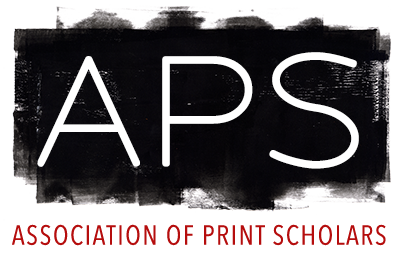Jennifer Noonan,
Maeve Coudrelle, Alessia Del Bianco, Camilla Pietrabissa
, Adelaide Duarte , Lígia Afonso, Jacob Lund.
"Current Issue of the Journal On Biennials and Other Exhibitions. Exhibiting Prints: The Role of Printed Matter in International, Large-Scale Exhibitions."
OBOE Journal On Biennials and Other Exhibitions
3, no. 1 (December 2022): 1-65.
Prints, artists’ books, posters, multiples, printed ephemera have been displayed, sold and collected in international, large-scale exhibitions. Alongside paintings and sculptures, they were—and still are—regularly exhibited at the Venice Biennale, São Paulo Biennale, documenta and in several other perennial exhibitions. Regardless of their continuous presence and vitality, there have been few studies about the role of prints and artists’ editions in the context of these exhibitions. OBOE’s third issue, Exhibiting Prints: The Role of Printmaking in Large Scale Exhibitions guest edited by Jennifer Noonan, intends to redress this lacuna while shedding new light on the manner in which printed matter has been vital for the life and fortune of large-scale international exhibitions.
Works on paper have often played a pivotal role in disseminating artists’ works to an international audience. As multiples, they are more accessible, and have a lower production and distribution cost. They are easier to transport than painting or sculpture, but also to collect, which led several art museums of distinguishable importance to acquire prints from international large-scale exhibitions. Notably, when Alfred H. Barr launched MoMA Activities, he almost immediately established a Print Cabinet and enriched it over the years with purchases from large-scale exhibitions such as the Venice Biennale. It is no coincidence that even today major art fairs like TEFAF in Maastricht devote an entire section of the commercial show to works on paper and prints. Furthermore, at the beginning of the 20th century, printed editions were one of the preferred strategies to advertise these exhibitions. They served to bolster cultural tourism and to emphasise the value of exhibitions.
From the first perennial of the Venice Biennale in 1895 with the Sale del Bianco e del Nero, into the 20th century when prints, ephemera, manifestos, and leaflets of performances is quite renown (Contrabienal and the 1970 Venice Biennale), and most recently to documenta 15 (2022), in which even the making of prints through the Lumburg Press was part of the exhibition, printed material has always held a specific, if not shifting, place. The exhibition of prints and artists’ editions within these venues has provided opportunities for national representation and the dissemination of ideas, even in times of changing regimes and difficult economic circumstances. For this reason, to understand the constitutive role of prints it is necessary to incorporate various perspectives on cultural tourism, dissemination of the avant-garde, bourgeois collections, taste-making, democratisation of art, institutional critique, as well as politics. This issue, therefore, is necessarily cross-disciplinary, gathering together a group of scholars and researchers with varied methodologies and approaches. Examining the production, presence and circulation of printed matter in biennial-type exhibitions from its origins to the present moment will expand histories of printmaking and will enrich the body of literature on large-scale, international exhibitions. For this special issue, we have been assisted by a specialist on this topic, Jennifer Noonan, who has edited this issue selecting the papers of Alessia Del Bianco, Maeve Coudrelle and Camilla Pietrabissa.
In addition, in the section Miscellanea, the issue hosts Jacob Lund’s essay “Exhibition as Reflective Transformation”. Taking Forensic Architecture's project Triple-Chaser as its point of departure, Lund theoretically explores the role of exhibitions in contemporary aesthetic and artistic practices. Finally, Adelaide Duarte and Lígia Afonso provide us with a meticulous review of three books, published between 2020 and 2021, reflecting on the mutual histories and shared aspects of contemporary art fairs and biennials.
